Related Research Articles
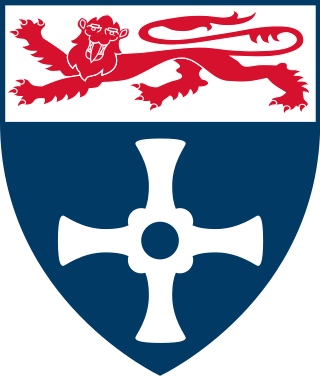
Newcastle University is a public research university based in Newcastle upon Tyne, North East England. It has overseas campuses in Singapore and Malaysia. The university is a red brick university and a member of the Russell Group, an association of research-intensive UK universities.
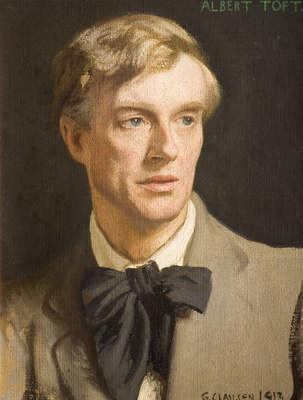
Albert Toft was a British sculptor.

Christopher Richard Wynne Nevinson was an English figure and landscape painter, etcher and lithographer, who was one of the most famous war artists of World War I. He is often referred to by his initials C. R. W. Nevinson, and was also known as Richard.
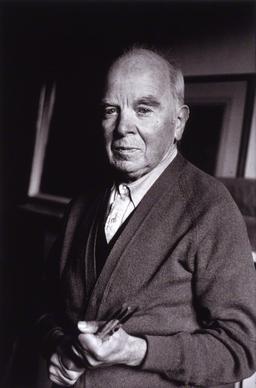
William Patrick Roberts was a British artist.
Frank Owen Dobson CBE was a British artist and sculptor. Dobson began as a painter, and his early work was influenced by cubism, vorticism, and futurism. After World War I, however, he turned increasingly toward sculpture in a more or less realist style. Throughout the 1920s and the early 1930s he built a reputation as an outstanding sculptor and was among the first in Britain to prefer direct carving of the material rather than modelling a maquette first. The simplified forms and flowing lines of much of his sculptures, particularly his female nudes, showed the influence of African art. From 1946 to 1953 Dobson was Professor of Sculpture at the Royal College of Art. He was elected to the Royal Academy in 1953. While Dobson was one of the most esteemed artists of his time, after his death his reputation declined with the move towards postmodernism and conceptual art. However, in recent years a revival has begun. Dobson is now seen as one of the most important British sculptors of the 20th century.

Sir Matthew Digby Wyatt was a British architect and art historian who became Secretary of the Great Exhibition, Surveyor of the East India Company and the first Slade Professor of Fine Art at the University of Cambridge. From 1855 until 1859 he was honorary secretary of the Royal Institute of British Architects, and in 1866 received the Royal Gold Medal.

Sir George Clausen was a British artist working in oil and watercolour, etching, mezzotint, drypoint and occasionally lithographs. He was knighted in 1927.
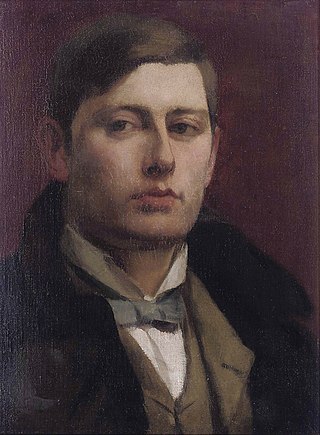
Sir George James Frampton, was a British sculptor. He was a leading member of the New Sculpture movement in his early career when he created sculptures with elements of Art Nouveau and Symbolism, often combining various materials such as marble and bronze in a single piece. While his later works were more traditional in style, Frampton had a prolific career in which he created many notable public monuments, including several statues of Queen Victoria and later, after World War I, a number of war memorials. These included the Edith Cavell Memorial in London, which, along with the Peter Pan statue in Kensington Gardens are possibly Frampton's best known works.
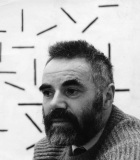
Edwin John Victor Pasmore, CH, CBE was a British artist. He pioneered the development of abstract art in Britain in the 1940s and 1950s.
Charles Robert Owen Medley CBE, RA,, also known as Robert Medley, was an English artist who painted in both abstract and figurative styles, and who also worked as theatre designer. He held several teaching positions in both London and Rome.

Victor Noble Rainbird was a painter, stained glass artist and illustrator.

Dhruva Mistry is an Indian sculptor.

Sir William Goscombe John was a prolific Welsh sculptor known for his many public memorials. As a sculptor, John developed a distinctive style of his own while respecting classical traditions and forms of sculpture. He gained national attention with statues of eminent Victorians in London and Cardiff and subsequently, after both the Second Boer War and World War I, created a large number of war memorials. These included the two large group works, The Response 1914 in Newcastle upon Tyne and the Port Sunlight War Memorial which are considered the finest sculptural ensembles on any British monument.
Sir Walter Thomas Monnington PRA was an English painter, notable for several large murals, his work as a war artist and for his presidency of the Royal Academy.
The British Cypriot community in the United Kingdom consists of British people born on, or with ancestors from, the Eastern Mediterranean island of Cyprus. British Cypriot people may be of Greek, Turkish, Maronite, or Armenian descent.
British official war artists were a select group of artists who were employed on contract, or commissioned to produce specific works during the First World War, the Second World War and select military actions in the post-war period. Official war artists have been appointed by governments for information or propaganda purposes and to record events on the battlefield; but there are many other types of war artist.

Leonard Rosoman was a British artist.
Randolph Schwabe was a British draughtsman, painter and etcher who was the Slade Professor of Fine Art at University College London from 1930 until his death. He served as a war artist in both World Wars, created designs for theatrical productions and illustrated a number of books.
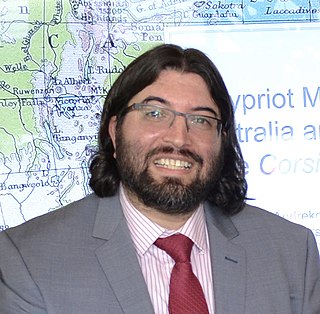
Professor Andrekos Varnava,, is a dual national Cypriot/Australian writer and historian, who is best known for his work confronting controversial moments in modern history and their consequences.
References
- ↑ Panayiotis Kalorkoti
- 1 2 The female form by Tamzin Lewis, The Journal
- 1 2 An Artist 'Who Paints in Poetry' EXHIBITION: Kalorkoti by Judith Bumpus, Western Mail (Cardiff, Wales)
- ↑ Penny Hicks; Automobile Association (Great Britain) (1 May 1995). Explore Britain's historic houses. Automobile Association. p. 26. ISBN 978-0-7495-1049-7.
- ↑ Shedding Light on the Face of Art by Lucy Bell, Coventry Evening Telegraph
- ↑ Europa Publications (2003). The International Who's Who 2004. Psychology Press. p. 845. ISBN 978-1-85743-217-6.